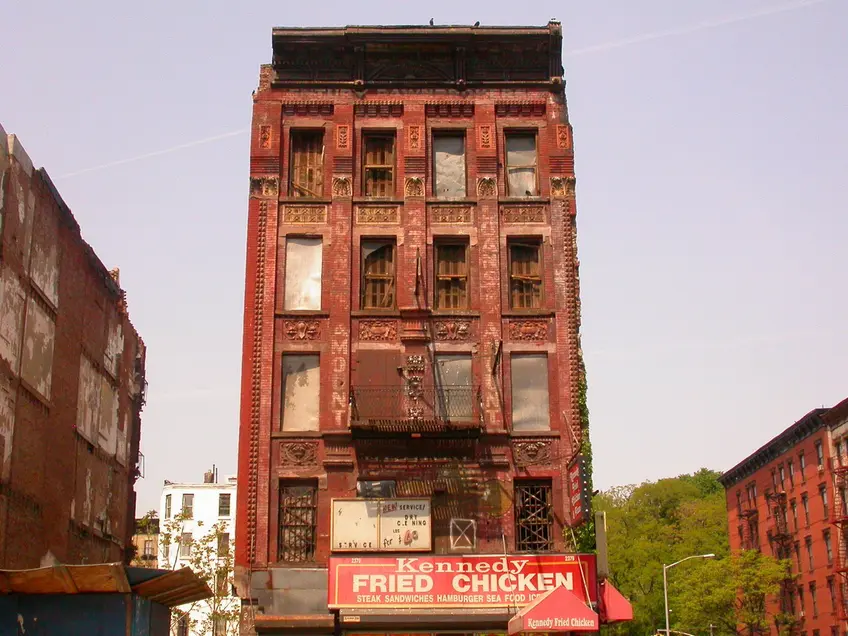
While some of the city’s reported incidents of falling bricks and mortar have been linked to storms, fires or active construction work, in most cases, the culprit has simply been poorly constructed and aging buildings.
Legislating Brickwork Repairs
Sheer neglect was the culprit of a 1979 incident that struck and killed Grace Gold, a freshman at Barnard College. Gold was walking along West 115th Street on a pleasant May evening when a 1- by 2-foot piece of concrete from an 11th-story window lintel came crashing down on her. Gold died within minutes but the high-profile incident, which was witnessed by several pedestrians and residents in the area, was impressionable enough to put pressure on the City of New York to introduce Law 10—the city’s first façade ordinance.
Law 10 applied to all buildings higher than six stories built before February 21, 1980. Under Law 10, owners of these buildings were required to employ a licensed architect or professional engineer to carry out a façade inspection once every five years. Although the law led to notable improvements, it had several limitations. Buildings more than 25-feet back from the sidewalk were excluded from Law 10 and so were any walls not facing the street. Also, there were no clear guidelines on what a “critical inspection” must entail. This meant that in some cases, the inspection simply involved a licensed architect or professional engineer carrying out a visual inspection with the aid of a pair of binoculars.
Brian Sullivan of Sullivan Engineering, who has supervised façade restorations across the city, explains that under the current ordinance, engineers must carry out a hands-on inspection. “Originally, only street elevations were subject to inspection. Under the current ordinance, all elevations are part of the inspection, and you have to do at least one hands-on inspection on at least one drop or elevation of the building.” Sullivan further explains that hands-on inspections must be carried out by trained staff and be supervised by a licensed architect or professional engineer who has visited the site.
The Impact of Façade Restoration on Tenants
Façade restoration, which often takes up to a year to complete on high rises, is not only an eyesore but also a major expense. In New York City, façade restoration is a multi-million dollar business. For the average residential high rise, this means digging deep into one’s reserves to cover related costs. As Sullivan notes, “Depending on the amount of required work, the cost can vary significantly from a couple of hundred thousands to several million dollars.” He adds that in some cases, buildings opt to complete both required and anticipated repairs, which can save money over time by minimizing the likelihood of more extensive façade restoration work in the future.
Beyond the cost, which frequently results in co-op fee hikes and rental increases, tenants in buildings under repair must contend with many inconveniences, including noise, dust, closed or partially closed rooftop amenities and brick workers hanging outside bedroom windows on scaffolds. “Some building managers are better at communication than others,” observes Sullivan, “And without adequate warning, it can be shocking to find workers hanging outside your window.”
The Bricks Continue to Fall
While owners and tenants may feel inconvenienced, it is important to bear in mind that façade restoration remains a necessary and life-saving intervention.
Law 10, Law 11 and the current Façade Inspection and Safety Program have each resulted in a notable reduction in injuries and fatalities related to falling bricks citywide but unfortunately, even under the current inspection program, tragedies continue to be reported.
On May 18, 2015, a 2-year-old girl was killed on the Upper West Side when a chunk of brick façade fell from the 8th floor of a building. The child, who was sitting on a bench below with her grandmother, was struck in the head and died shortly thereafter. A subsequent investigation found that in this case both the city and an engineer hired to oversee the investigation were at fault.
Despite the accompanying dust, noise and cost, given the potential for serious injuries and even fatalities, New Yorkers have many reasons to welcome the arrival of façade restoration season.


 6sqft delivers the latest on real estate, architecture, and design, straight from New York City.
6sqft delivers the latest on real estate, architecture, and design, straight from New York City.
